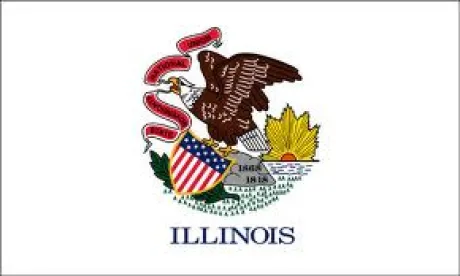On September 21, 2015, the United States District Court for the Southern District of Illinois denied a defendant’s motion in limine to exclude expert testimony in an asbestos case. Judge Staci M. Yandle denied General Electric Company’s motion to exclude the expert testimony of Dr. Matthew A. Vuskovich in Kochera v. General Electric Company, et al., No. 14-29 (S.D. Ill. 2015).
General Electric argued that portions of Dr. Vuskovich’s testimony should be excluded because he was not qualified to render an expert opinion, his testimony was not sufficiently reliable, and he based his opinions on the “every exposure” theory, which is not generally accepted by the scientific community or the federal courts.
General Electric challenged Dr. Vuskovich’s use of the “every exposure” theory, arguing that it does not meet the “substantial factor” requirement to show causation and that it has been rejected by some federal and state courts for being “unscientific and unsubstantiated by evidence.” Judge Yandle recognized that the “every exposure” theory has been rejected by courts in the past, but said that other courts “have distinguished testimony suggesting that a de minimus exposure to asbestos could cause mesothelioma from testimony that each significant exposure to asbestos could be a cause.”
Judge Yandle noted that Illinois uses the “frequency, regularity and proximity rule” to establish causation in asbestos cases. She cited Tragarz v. Keene Corp., 980 F.2d 411, 421 (7th Cir. 1992), which stated that “where there is competent evidence that one or a de minimis number of asbestos fibers can cause injury, a jury may conclude the fibers were a substantial factor in causing a plaintiff’s injury.” Using the Court’s opinion from Tragarz, Judge Yandle determined that “even if Dr. Vuskovich relied on an ‘every exposure’ theory, such reliance would not render his testimony inadmissible.”
Dr. Vuskovich stated in his report that asbestosis is a cumulative disease, meaning that “every exposure to asbestos that is non-trivial in context” contributes to the disease. He further stated that “it is not possible to say, within a reasonable degree of medical certainty, what the threshold exposure requirement is for asbestosis.” Dr. Vuskovich reached the conclusion that the plaintiff’s exposures were not trivial based on his occupational and military history. Judge Yandle relied on this information to reach the conclusion that Dr. Vuskovich’s use of the “every exposure” theory was not scientifically invalid or unreliable, leading her to deny General Electric’s motion to exclude Dr. Vuskovich’s testimony.
Judge Yandle also addressed whether Dr. Vuskovich was qualified to render an expert opinion, and she held that he was so qualified. Judge Yandle based her opinion on Smith v. Ford Motor Co., 215 F.3d 713, 718 (7th Cir. 2000), which says that a court should “consider a proposed expert’s full range of practical experience as well as academic or technical training” in determining whether an expert is qualified to give an expert opinion. Using this standard, Judge Yandle found that Dr. Vuskovich was qualified to render an expert opinion regarding the plaintiff’s diagnosis and causation after “having considered his full range of practical experience as well as his academic and technical training.” Judge Yandle further stated that the defendant’s argument that Dr. Vuskovich was unqualified because he is not a radiologist or a pulmonologist and is unpublished in the field of asbestos did not “render him disqualified.”
Judge Yandle further considered General Electric’s claim that Dr. Vuskovich’s opinions were not based on sufficient facts and that Dr. Vuskovich’s report was scientifically unsupported and unreliable. In considering this, Judge Yandle relied on the United States Supreme Court’s decision in Daubert v. Merrell Dow Pharm., Inc., 509 U.S. 579 (1993), which held that for scientific evidence to be admissible, a district court must find it both relevant and reliable and it must be scientific knowledge grounded “in the methods and procedures of science” and consist of more than “subjective belief or unsupported speculation.” Dr. Vuskovich examined the plaintiff, reviewed his occupational and medical records, and reviewed his history of military service as well as his smoking history and a chest x-ray. Judge Yandle found that this information, on which Dr. Vuskovich based his report and opinions, was sufficient.
Conclusion
Although courts in Arizona, Delaware, Hawaii, Maine, Maryland, Massachusetts and Pennsylvania have all excluded or criticized the each and every exposure theory, some courts continue to allow this scientifically unsound evidence. Unfortunately, the each and every exposure theory continues to allow attorneys for plaintiffs in certain jurisdictions to sue numerous defendants whose contribution to disease development was often trivial at best.


 />i
/>i

